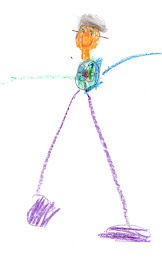Last week I thanked snow plow drivers and street departments
for their great work. This week I’m thanking those who have designed our
highway systems.
We take such things as yellow center lines for granted. They
are there to tell us where our lane is, and when the line is solid, we know we’re
not supposed to cross it. There was a time when there were no yellow stripes,
and on some country roads there are none today. I asked a county road
commissioner why there was no yellow line on a country road east of Eureka, and
he told me it was because the road wasn’t wide enough for two lanes. Since the
road didn’t get much traffic, there was no impetus to widen it.
Do you remember gravel roads? I sure do. If you were the
first car in the pack, it wasn’t bad, but if your car was second or third, you
ate dust…and the only ‘air conditioning’ in our cars was having the windows
open, dust or no dust. There were no yellow lines on gravel roads.
But gravel was a real step up in at the turn of the 20th
century. Before the automobile gained enough popularity, roads were dirt
tracks. In the spring they were inches deep in mud. When the mud dried, the roads
were inches deep in ruts. If two vehicles met each other, they had to try to
get far enough off the side so they could pass each other. With horses that
wasn’t much of a problem, of course.
The advent of the automobile changed all that. The first
paving was brick and many a town still sports streets of red brick and treasures
the sound the tires make on brick. The streets around the Woodford County Courthouse
and extending south to the cemetery were laid with heavy red brick on sand in
1909. The next year the brick paving was extended a few blocks north of the
railroad.
The first concrete street was laid in Bellefontaine, Ohio,
in 1894, and it’s still in use today. Concrete roads didn’t come to Central
Illinois until the 1920s, but soon after the first such roads were laid,
someone realized that you could put a center stripe on them and therefore might be able
to prevent some head-on crashes.
The development of our current system of streets, roads and
highways has been relatively speedy. The interstate highway system was
developed in 1956, originally as a way to move troops and military equipment
quickly across the country. Machines that lay highways continuously make short
work of what used to be laborious indeed.
Scotchlite was invented by 3M in 1936 and was introduced
into highway signs in the 1940s. Suddenly an ordinary road-side sign would seem
to light up and glow at night when struck by headlights. In the past 15 years
more and more roadways are edged with a white reflective line, and small reflectors
are mounted right in the street surface at many intersections.
We probably pay
little notice to highway design under ordinary conditions, but when faced with ‘white-out’
conditions, we find ourselves clinging to that white line along the road and
looking hard for the yellow line down the middle. It’s difficult to imagine how
anyone drove in a white-out without such conveniences.
There was a time when my husband, children and I were
traveling through Wyoming at night. Suddenly our car lights went out. They just
stopped. We were miles from anything. Fortunately my husband had a 7-cell
flashlight in the car. I opened my window and shined the flashlight out at the
reflectors on the poles that were spaced every tenth of a mile. He drove down
that pitch-black highway guided only by those reflectors until we made it to
the next town.
So we say ‘thank you’ to highway designers. You make our
traveling so much easier and safer.


